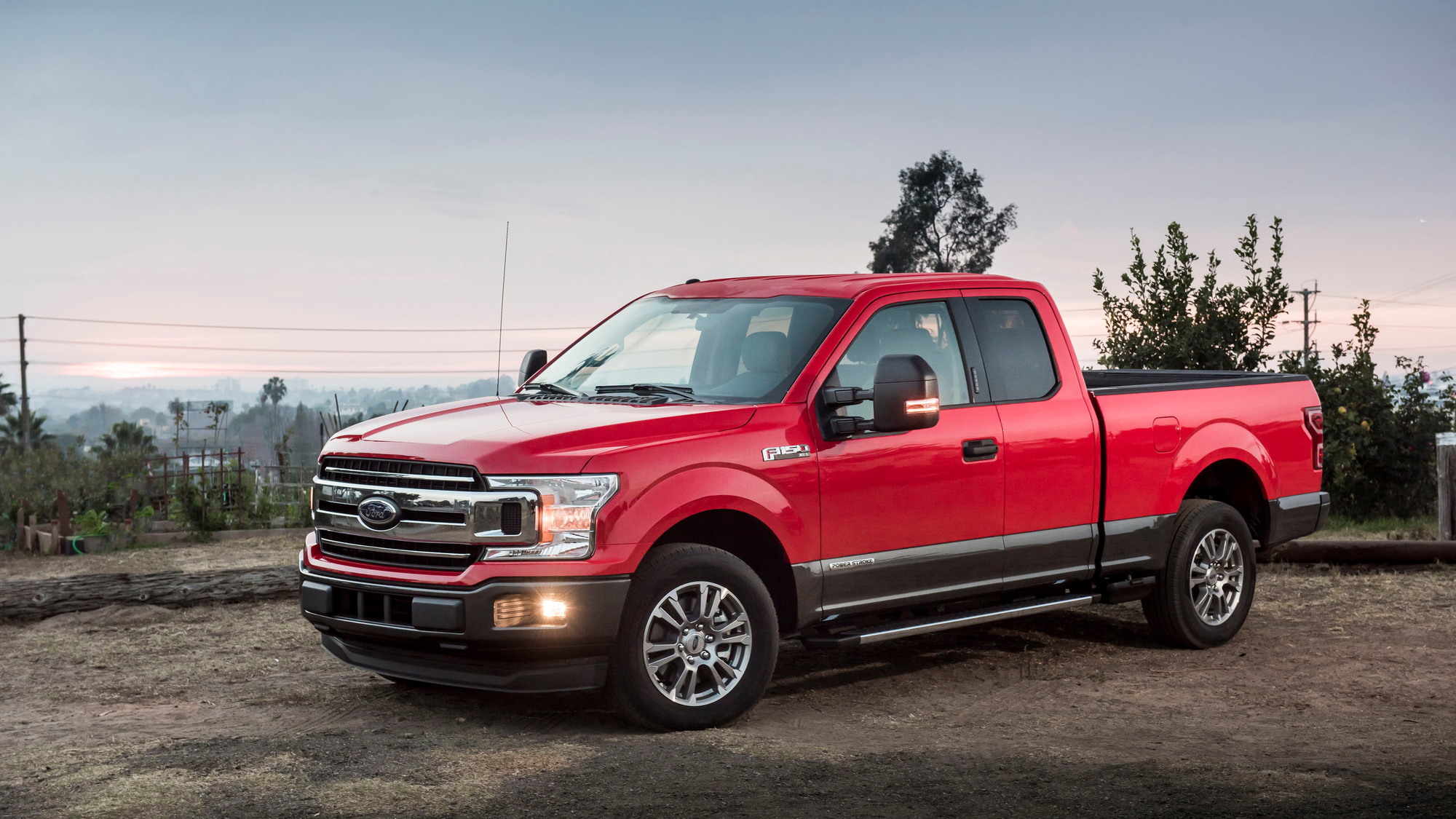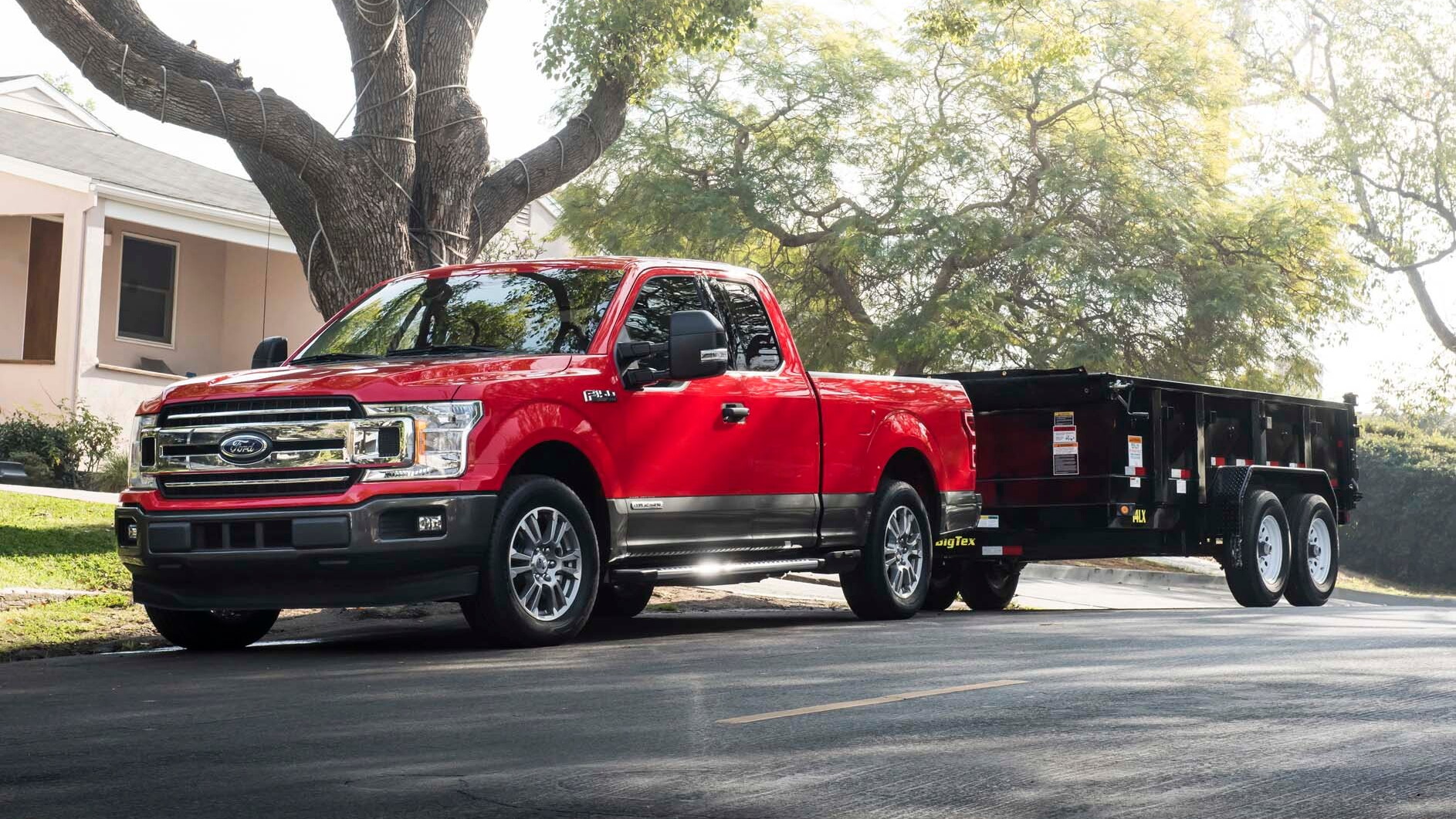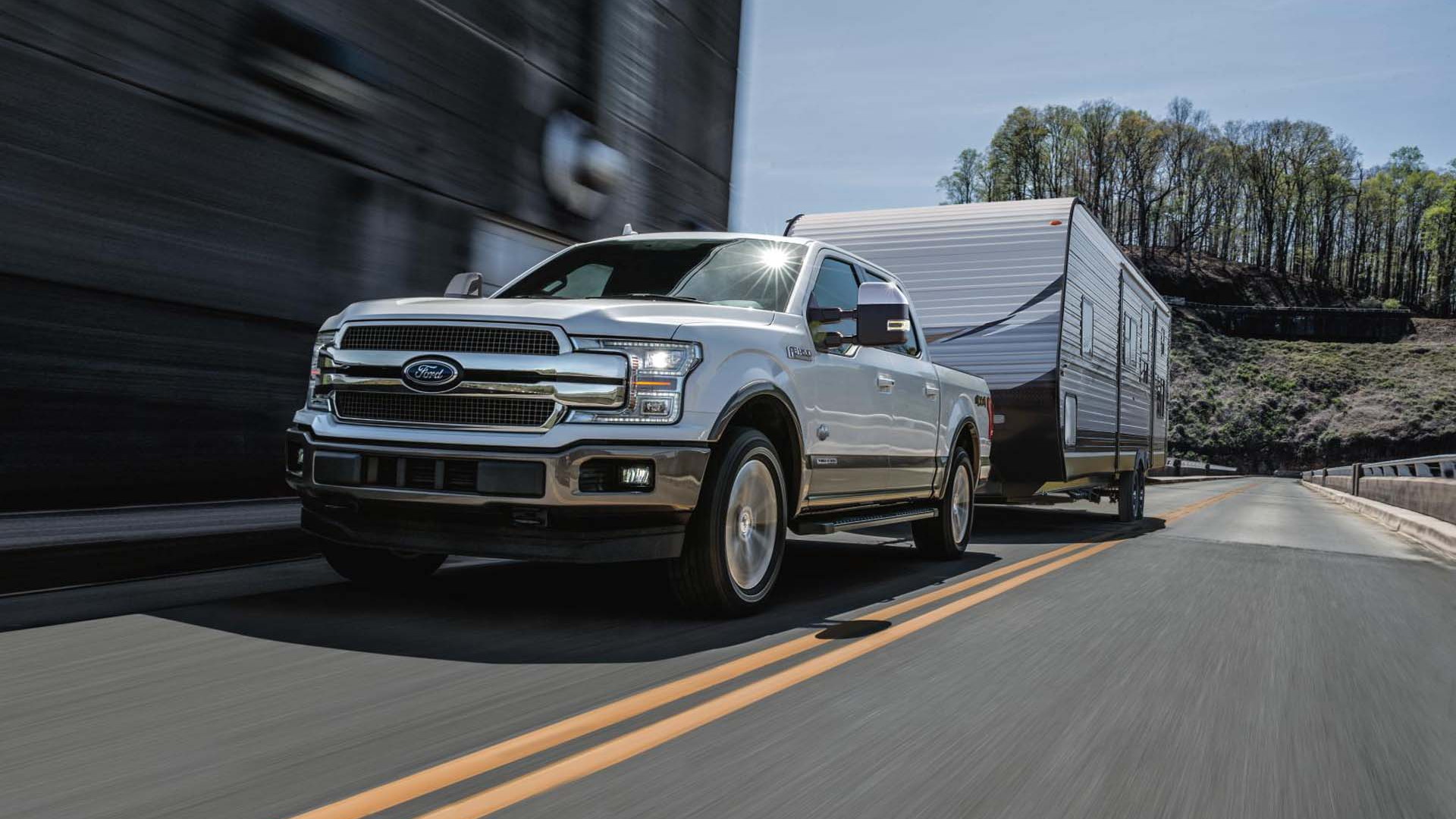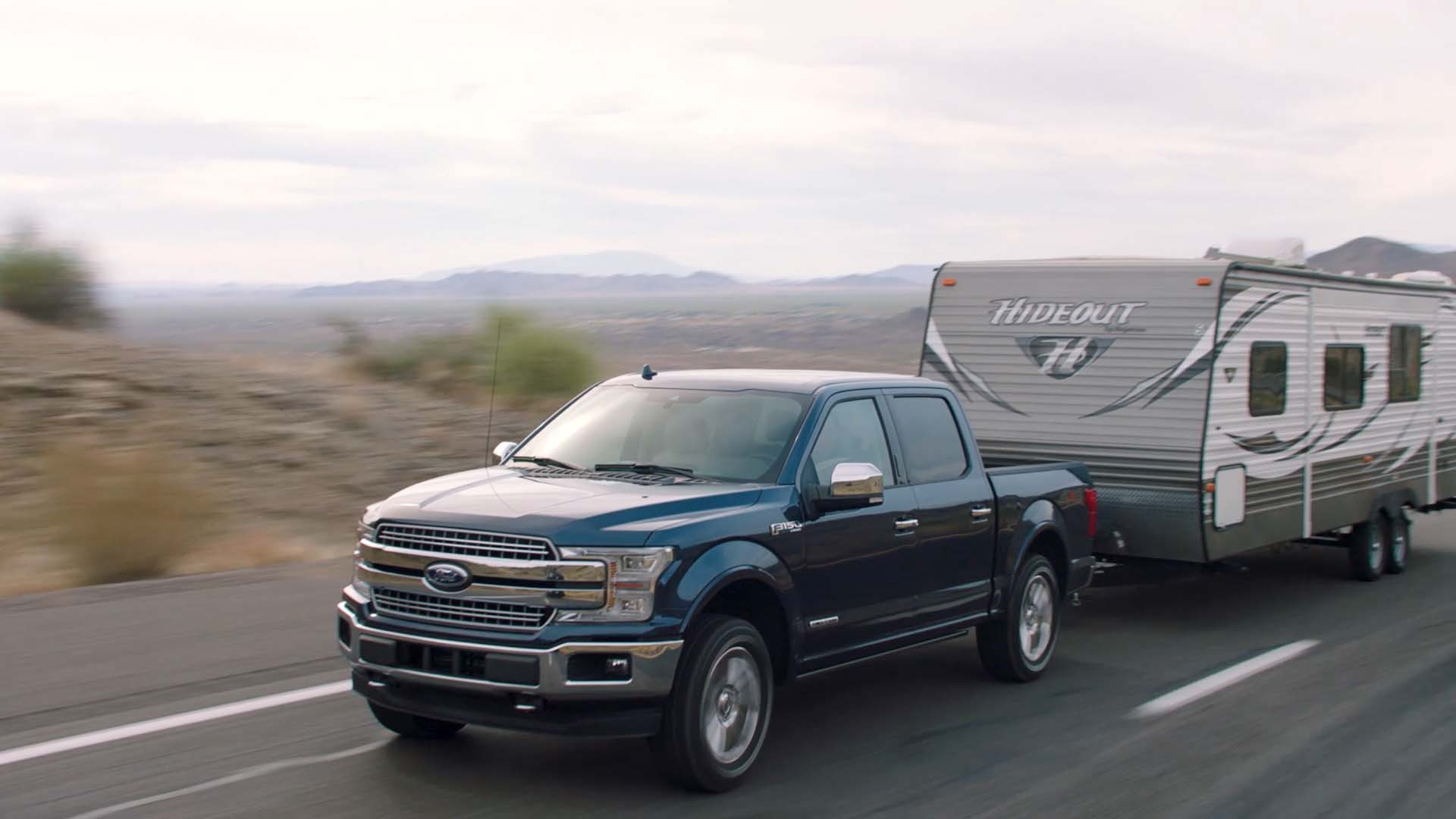Ford has a gem of a diesel engine under the hood of the 2018 F-150 Power Stroke—as long as drivers aren’t enamored with good fuel economy.
Wait, what?
After a day of driving F-150 diesels in the foothills of the Rocky Mountains near Boulder, Colorado, unladen, with beds loaded up with heavy building materials, and with big trailers attached, I found a truck that’s exceptionally refined, sprightly, and confidence-inspiring. But not exceptionally fuel-efficient.
DON'T MISS: Ford puts its money on SUVs, trucks—not cars
Underhood, the 3.0-liter V-6 is a muffled, silent performer, that makes 250 horsepower and 440 pound-feet of torque.
The latter figure is the one to watch. Even though its peak comes on from just 1,750 to 2,250 rpm, the 10-speed automatic transmission’s ratios keep the engine right in that power band when necessary.
Ford builds its turbodiesel V-6 in Dagenham, England, alongside related 3.0-liters (or are they litres?) bound for Jaguars and Land Rovers. The F-150's engine is no Dagenham dustbin, and neither is the JLR unit. For the truck, Ford engineers beefed up its turbo, modifiedi its crankshaft, swapped in unique bearings, and increased fuel pressure.
Surprisingly, the turbodiesel lets into the cabin less rumble in the F-150 than it does in those luxury cars. Admittedly, I didn’t get to hear a cold start, but the V-6 makes only a modest tick outside and is essentially imperceptible inside thanks to special firewall sound deadening.
More importantly, I didn’t have the opportunity to measure fuel economy on my own, but the modest figures calculated by the full-size pickup’s fuel-economy gauge during my myriad tests were not eyebrow-raising.
ALSO SEE: Ford releases fuel economy figures for new F-150 diesel
I did manage an indicated 37.7 mpg in a very gentle (read: very slow) drive in a rear-drive F-150 Power Stroke. I also enraged at least two Subaru drivers and cannot recommend that you do the same.
The EPA test figures will get your attention, but not for all the right reasons: 22 mpg city, 30 mpg highway, 25 mpg combined with rear-wheel drive, but just 20/25/22 mpg for the four-wheel-drive variants Ford expects to be more popular.
Ford explained that hefty highway fuel-economy disparity by blaming it on a few factors.
For one, the automatic four-wheel-drive system’s transfer case is both heavy and the root cause of some parasitic driveline loss. Additionally, rear-drive trucks are fitted with smaller tires—street-oriented 245/70-17 instead of all-terrain 265/70-17 rubber.
The more complicated explanation lies in the way Ford approaches the EPA test by certifying what it expects to be the most popular body styles and trim levels for each set of drive wheels.
MUST READ: Ford's future hybrid, electric-car lineup: 5 things to know
Ford expects four-wheel-drive models to be mostly dressier Lariat, King Ranch, and Limited trims. For the rear-drive version, Ford says it anticipates a shift in favor of fleet trims not decked out with niceties like leather seats, oversized wheels, panoramic moonroofs, and thumpin’ stereos.
Ford anticipates that rear-drive diesels will skew toward fleets, so it won’t offer the XL and XLT trims with the engine to retail buyers. Fleets can order them and Ford will undoubtedly offer plenty of charts to show how 30 mpg will eventually offset a premium as much as $4,000 higher than standard gas engines depending on the trim level.
For those handful of fleet buyers who cover long distances, the F-150 Power Stroke is a winner.
Yet for consumers or fleets intent on towing, the math is fuzzy at best.
CHECK OUT: Under pressure: Ford F-150 diesel aims for big towers, bigger cruising distances
Certainly, the F-150 Power Stroke trucks I drove in Colorado provided capable, confident towing ability. Most versions are rated to lug around 10,000 pounds strapped to a trailer, which comes in as much as 2,000 pounds less than equivalent gas versions.
What those numbers don’t show is emotion—in this case, the confidence provided by the diesel’s hefty torque curve and satisfying 10-speed automatic.
A small market again, unfortunately; the F-150 Power Stroke’s ideal consumer audience may be those who tow hefty, but not huge, loads on a somewhat regular basis.
Then again, Ford says it figures just 5 percent of F-150 buyers will park a Power Stroke in their driveway.
Given those modest expectations for its limited audience, Ford’s stab at a diesel half-ton pickup may be just right.



















